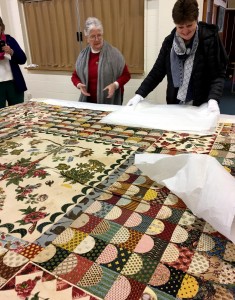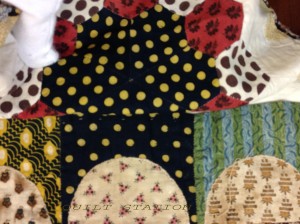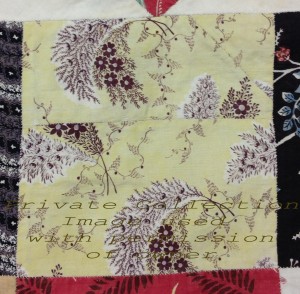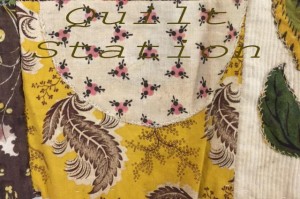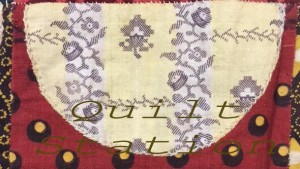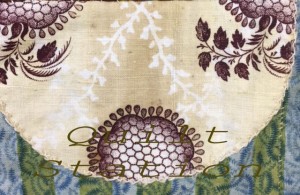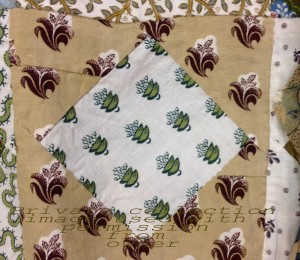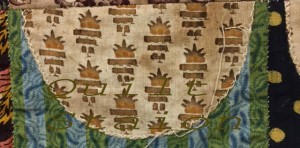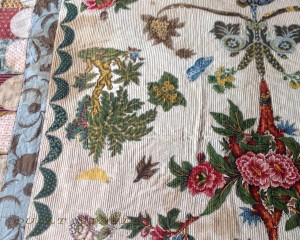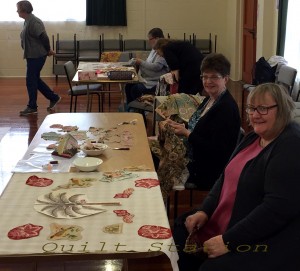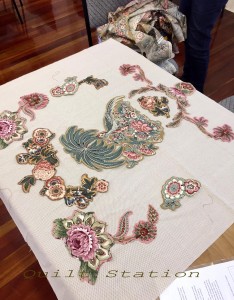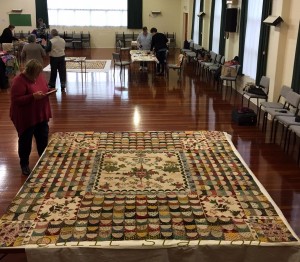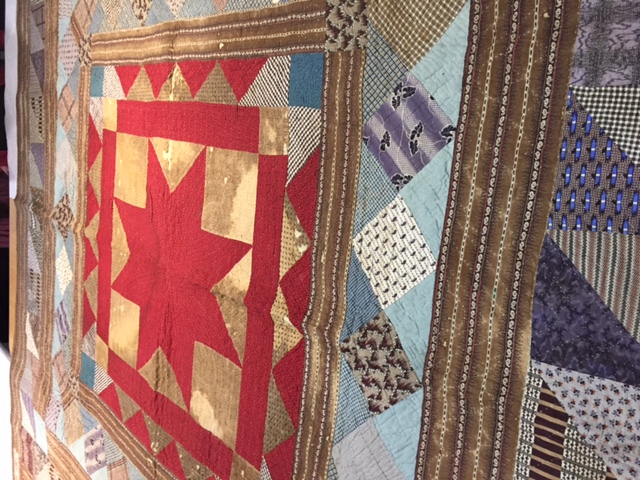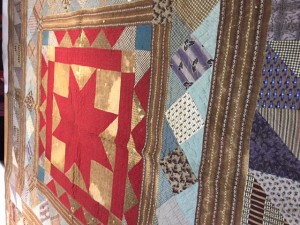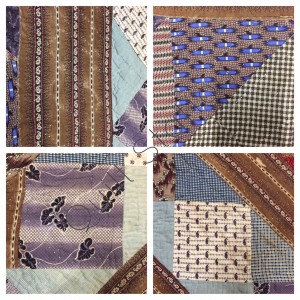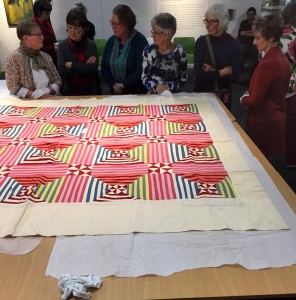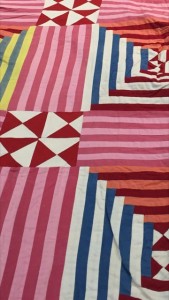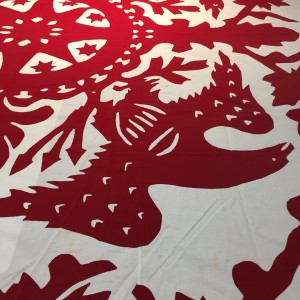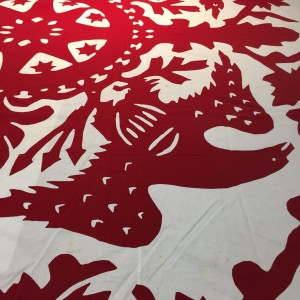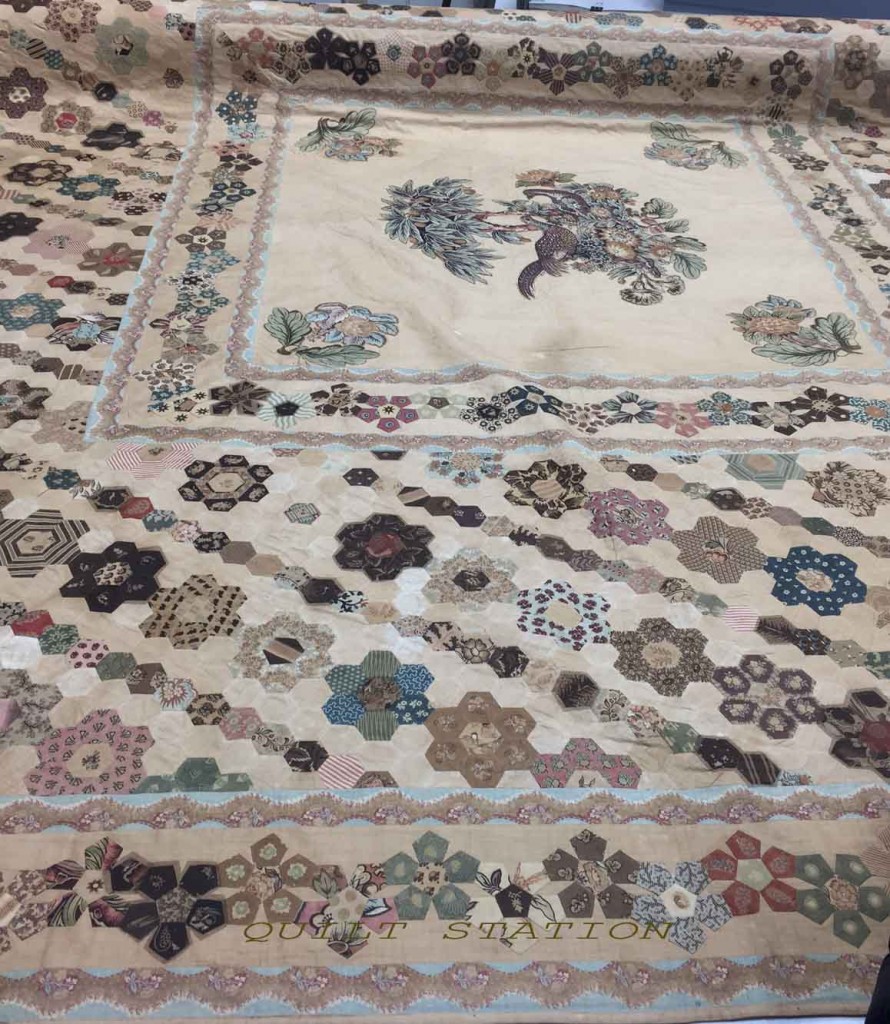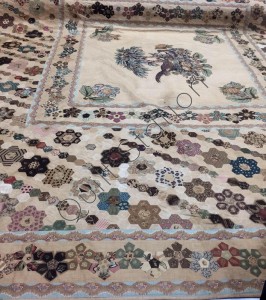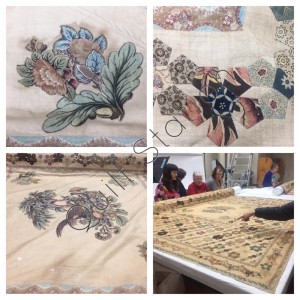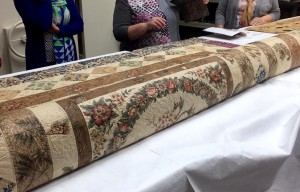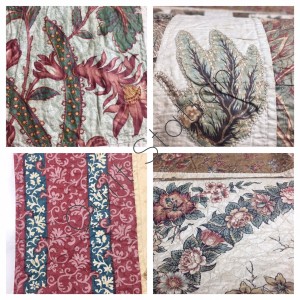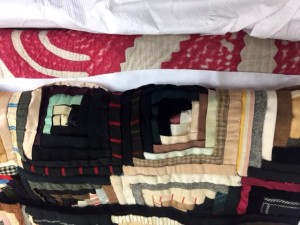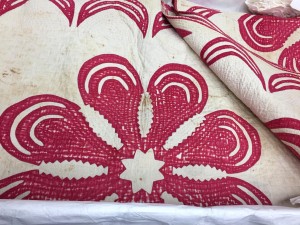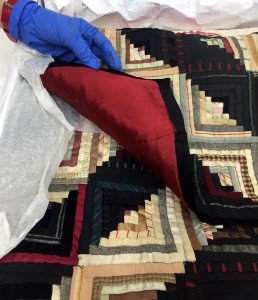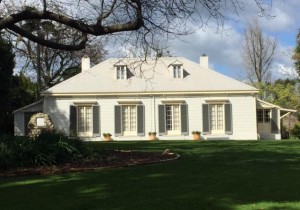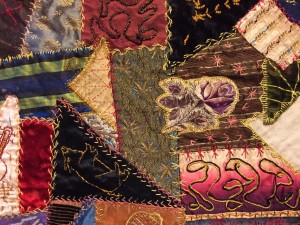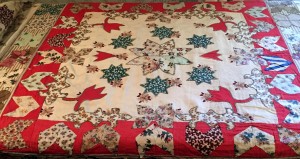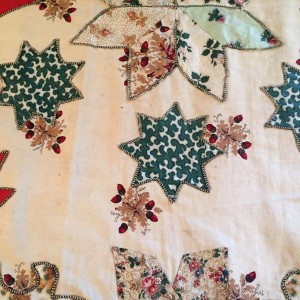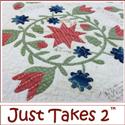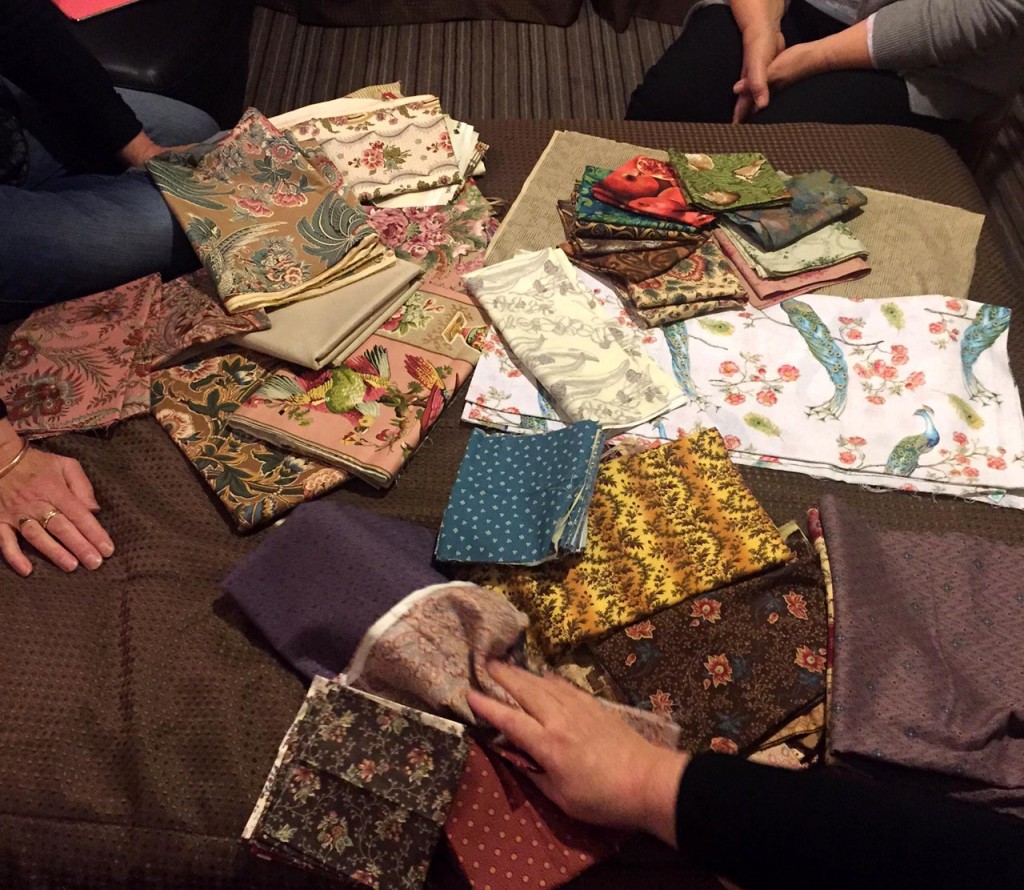
Hello again, I think you’ll find this final part of the Colonial Quilts posts totally swoon-worthy… I sure hope so.
Our tour made its way to the small town of Te Aroha in the Waikato region to view a c 1820-1830 Broderie Perse Chintz coverlet. This coverlet, which I first visited in 2014, was the impetus for the whole trip.
As she was revealed, there were gasps and smiles.
And we had two whole days to spend with her.
The first day was an in-depth study day convened by Janet O’Dell. In the morning we spent time studying the evolution of fabric manufacturing and printing. Janet’s knowledge in this area was invaluable in giving us an understanding of the cotton industry. As well, Janet brought many antique coverlets and assorted pieces from her own collection to compare fabrics and quilt styles with the Te Aroha coverlet and we studied those alongside Te Aroha’s coverlet in the afternoon.
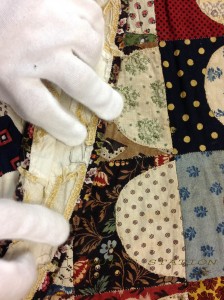
Comparing a piece from Janet’s collection with the Te Aroha coverlet. This was the best match we got!
Spots are always the same… or are they?
Sometimes the print was similar but the colour not the same.
Or the colour was the closer but the print was different
Small geometrics, especially the interesting ‘stacked’ designs featured frequently in Te Aroha’s and Janet’s coverlets. But not once a perfect match
Te Aroha’s coverlet is in the medallion style. At its centre is a large Broderie Perse design featuring flowers, trees, butterflies and other motifs cut from a chintz fabric. In addition there are some birds cut from plain and print fabrics. The centre arrangement of flowers and trunk has a seam through the centre to create a symmetrical design. One tree on the centre section has also been pieced to create the desired design. Here however, they have not been cut from the same fabric.
All these are raw edge applique attached with a herringbone stitch in white thread.
The Rising Moon blocks are all pieced over papers and whip stitched together, the half circles are appliqued on top, again raw edge and a herringbone stitch.
The coverlet is not backed, but is hemmed on all four sides. Family history tells us it was a finished piece, and was used by the descendents of the maker. It would be put on the bed for special visitors, including any house calls from the Doctor.
It was quite a sobering moment when she (the coverlet) had to be returned to her usual abode. We’d all grown fond of the grand old lady, and crowded around her for one more photo and some last minute looks. Carefully covering her up again and making sure she was safely wrapped, before she was collected and carried out.
It was good for her to have a really good airing and a whole 48 hours flat
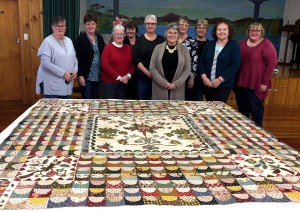
Thank you to these ladies for making this Study Trip so wonderful and especially to Janice for being so helpful in bringing it all together.
Just a few pics to close of the Broderie Perse workshop we did on the Sunday. Students worked on their own version of Miss Hitchens’ Whimsy as featured in my book Quilts from the Colonies published by Quiltmania
How very special to have the original coverlet on hand for inspiration!
Well that’s the trip… I am already thinking I would love to do it again next year and add some different museums and quilts if possible. Let’s see what transpires.
Don’t forget to click on all the photo’s to really get a better view. Click agin on the green arrow for zooming in capabilities… you’ll be glad you did.
Thanks so much for visiting these posts, I know there was a lot of info to take in
Happy stitching
til next
Margaret xx
